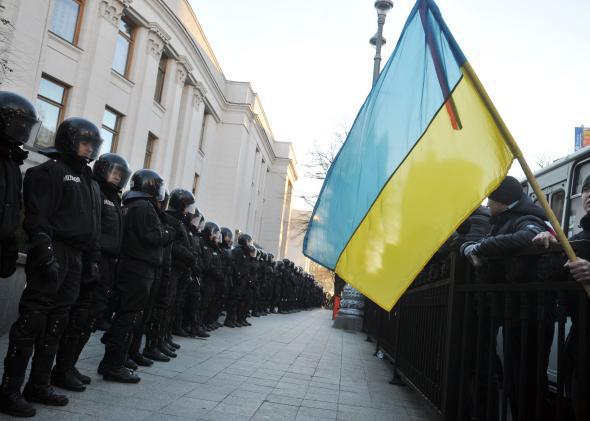At the moment, it’s hard to see an obvious way out of the ongoing political standoff if Kiev. President Viktor Yanukovych survived a no-confidence vote in parliament, but protesters continue to lay siege to the government. The president indicated yesterday that he was willing to reverse course and restart talks on a political association and free-trade pact with the European Union—the decision to suspend talks was what prompted the demonstrations in the first place—but European leaders don’t seem willing to substantially change their conditions or allow Russia to participate in the talks, as Yanukovych as suggested, so it’s not quite clear what’s going to be different this time around.
Julia Gray lays out the stakes of Ukraine’s decision pretty well over at the Monkey Cage. While theoretically Ukraine is choosing between a customs union led by Russia and a deal with the EU, it in fact already has extensive trade ties with all the countries involved through the WTO and various post-Soviet integration schemes. This is more of an issue of the country’s political future. The consequences of spurning the EU have been obvious over the past week. That being said, Russia—a major trading partner, energy supplier, and holder of Ukrainian debt—probably has more means at its disposal to punish Ukraine. There aren’t a lot of good options for the country.
In the immediate term, Ukraine faces a cash crunch. In addition to a monthly gas bill of about $1 billion, it needs to repay more than $8 billion to the IMF next year. Foreign reserves have nearly halved in the last two years and the country’s GDP shrank 1.5 percent in the past year.
In the long run, Ukraine’s bigger problem may be that it is running out of Ukrainians. Thanks to a low birth rate, the highest death rate in Europe, and high levels of outmigration, Ukraine’s population shrank by 11.8 percent between 1991 and 2011, from 51.6 million to 45.5 million. This fall can push up real wages, but it’s going to make it a lot harder for the country to increase productivity in the future.
It’s clear that Ukraine needs to make some major structural economic reforms quickly, which the conditions of the EU deal might have helped encourage. Aligning with Russia might seem like an easier short-term decision—and from Yanukovych’s perspective, less likely to involve pesky human rights criticism. But at the moment, the country doesn’t really appear to be headed anywhere.
